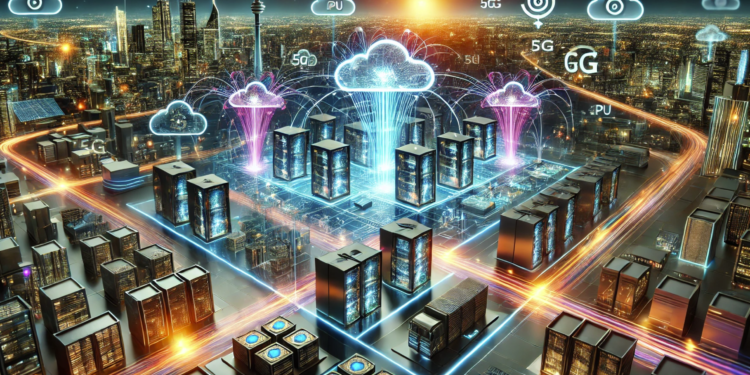As artificial intelligence (AI) continues to drive innovation across industries, cloud computing infrastructure must evolve to meet the increasing demands for speed, scalability, and efficiency. Traditional cloud architectures often struggle with latency issues, limiting the performance of AI-powered applications. To address this challenge, next-generation low-latency cloud architectures are emerging as the key to optimizing AI workloads, enhancing responsiveness, and maximizing computational efficiency.
The Need for Low-Latency Cloud Architectures in AI
AI applications—ranging from real-time analytics and autonomous systems to generative AI models and deep learning—require rapid data processing with minimal delay. However, high network latency, inefficient resource allocation, and data transfer bottlenecks within traditional cloud environments hinder AI performance.
With the growing adoption of AI in finance, healthcare, gaming, and smart cities, cloud providers and enterprises are prioritizing low-latency architectures to ensure seamless real-time decision-making and enhanced user experiences.
Key Innovations in Low-Latency Cloud Architectures
- Edge Computing Integration
- Edge computing reduces reliance on centralized cloud servers by processing data closer to the source—at the network edge.
- By offloading AI inference tasks to edge nodes, businesses can minimize round-trip delays, ensuring ultra-fast response times for real-time applications like IoT, autonomous vehicles, and remote healthcare.
- Accelerated Hardware for AI Workloads
- The integration of AI-specific processors such as GPUs (Graphics Processing Units), TPUs (Tensor Processing Units), and FPGAs (Field-Programmable Gate Arrays) within cloud environments enhances computational efficiency.
- These hardware accelerators enable parallel processing, allowing AI models to train and infer faster while reducing overall latency.
- Optimized Networking with High-Speed Connectivity
- 5G and advanced fiber-optic networking play a crucial role in reducing latency across cloud-AI ecosystems.
- Technologies like NVMe-over-Fabrics (NVMe-oF) and RDMA (Remote Direct Memory Access) improve data transfer speeds between storage and compute nodes, significantly lowering AI model execution time.
- Serverless Computing and Auto-Scaling
- Event-driven, serverless architectures dynamically allocate resources only when needed, eliminating idle processing times.
- AI models running in serverless environments can scale automatically in response to demand, ensuring optimal performance without unnecessary latency overhead.
- AI-Optimized Data Management and Caching
- Intelligent data caching mechanisms store frequently accessed AI datasets closer to processing units, reducing retrieval delays.
- Advanced AI-driven data management strategies prioritize real-time indexing and efficient memory allocation, streamlining AI inference pipelines.
The Impact on AI-Driven Industries
Industries leveraging low-latency cloud architectures stand to benefit significantly:
- Finance: High-frequency trading and fraud detection systems rely on real-time AI-powered decision-making.
- Healthcare: AI-driven diagnostics and remote patient monitoring demand ultra-low latency for immediate analysis.
- Autonomous Vehicles: Self-driving cars require instant AI processing to interpret sensor data and make split-second navigation decisions.
- Gaming & Metaverse: Cloud gaming and AR/VR applications require minimal lag to ensure seamless, immersive user experiences.
The Future of Low-Latency Cloud Computing for AI
With AI adoption accelerating, cloud providers are rapidly innovating to deliver ultra-low-latency architectures that redefine efficiency. Advancements in edge computing, AI hardware acceleration, and intelligent networking will continue to push the boundaries of real-time AI processing.
As businesses and developers prioritize faster, smarter, and more responsive AI solutions, low-latency cloud architectures will shape the next era of AI-driven innovation.


















